Advertisement
How Cambridge's public art protectors fight graffiti and grime
Resume
Picture a work of art. Now imagine it covered in sap, spider webs, bird poop — even graffiti. That’s the reality for hundreds of outdoor pieces across Cambridge, which has the largest public art collection in New England.
After each long, messy winter, the city’s conservation team mobilizes to take care of that massive trove. In early June, a four-person posse started their day at Canal Park, not far from the Museum of Science. They were armed with buckets, a ladder, gentle detergents and other tools of the trade. Then they fired up a battery-powered spray washer to douse a 14-foot-tall sculpture with water.
“So we're washing and waxing the Tower of East Cambridge Faces by James Tyler,” Craig Uram said. The sculpture’s 50, life-sized bronze faces are of area residents circa 1986, and he likened the grouping to a time capsule. “You know, of people’s hairstyles and what eyeglasses looked like in the '80s.”
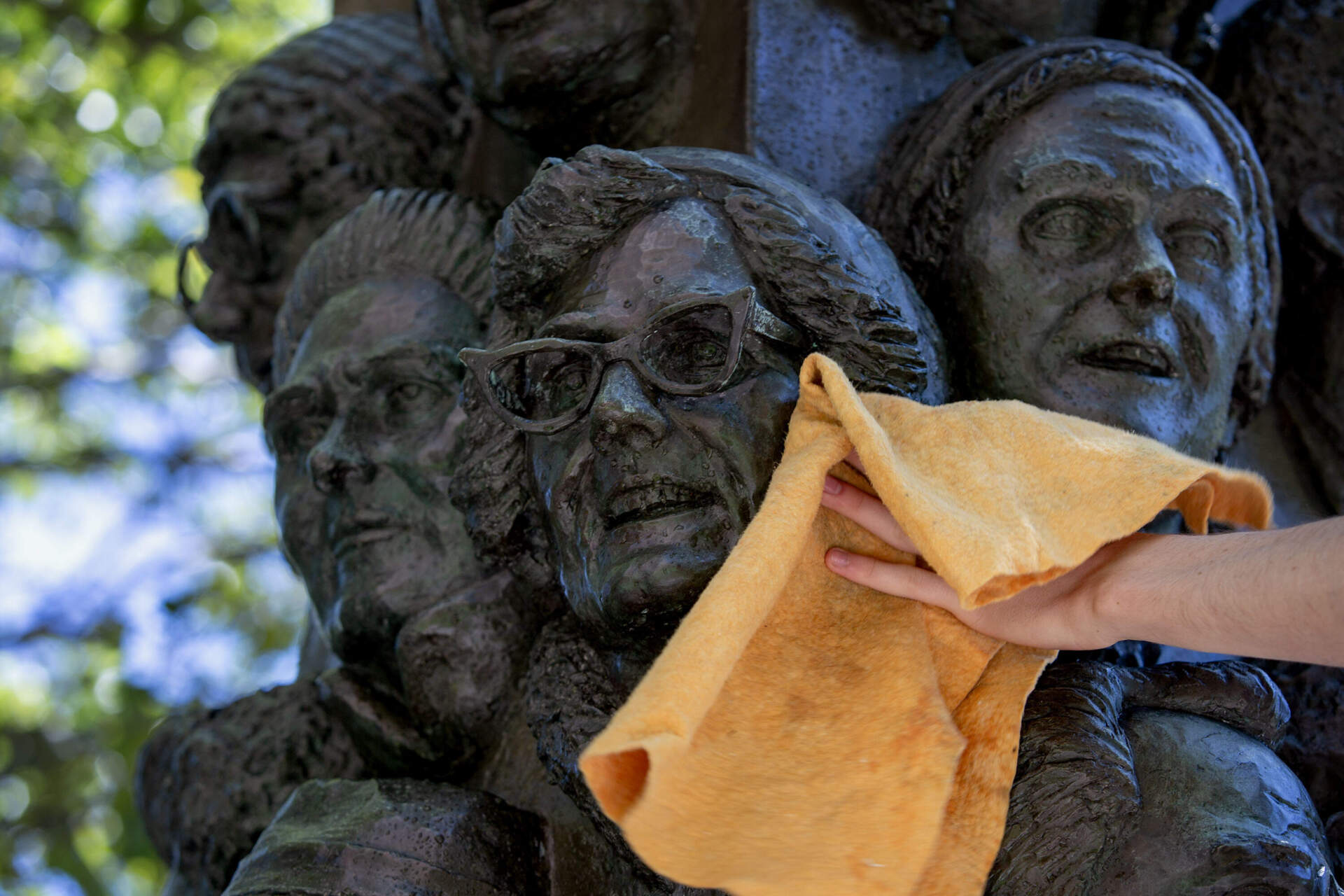
Uram knows this piece well because he’s the city’s director of art conservation. He explained how a dusting of pollen, along with spider webs and a year’s worth of urban grime, had formed a dirty veil. Watery detritus streamed down the sculpture as the team gently scrubbed with soft brushes to avoid damaging the bronze patina.
“We have about 300 pieces in the collection,” Uram said, “and we maintain them just like you would your car or your own health.”
Uram’s been an art conservator for 25 years, mostly indoors at museums. Since he took this job five years ago, he and his team have crossed the city to photograph, assess and restore outdoor murals, mosaics and sculptures. And oh, the things they see.
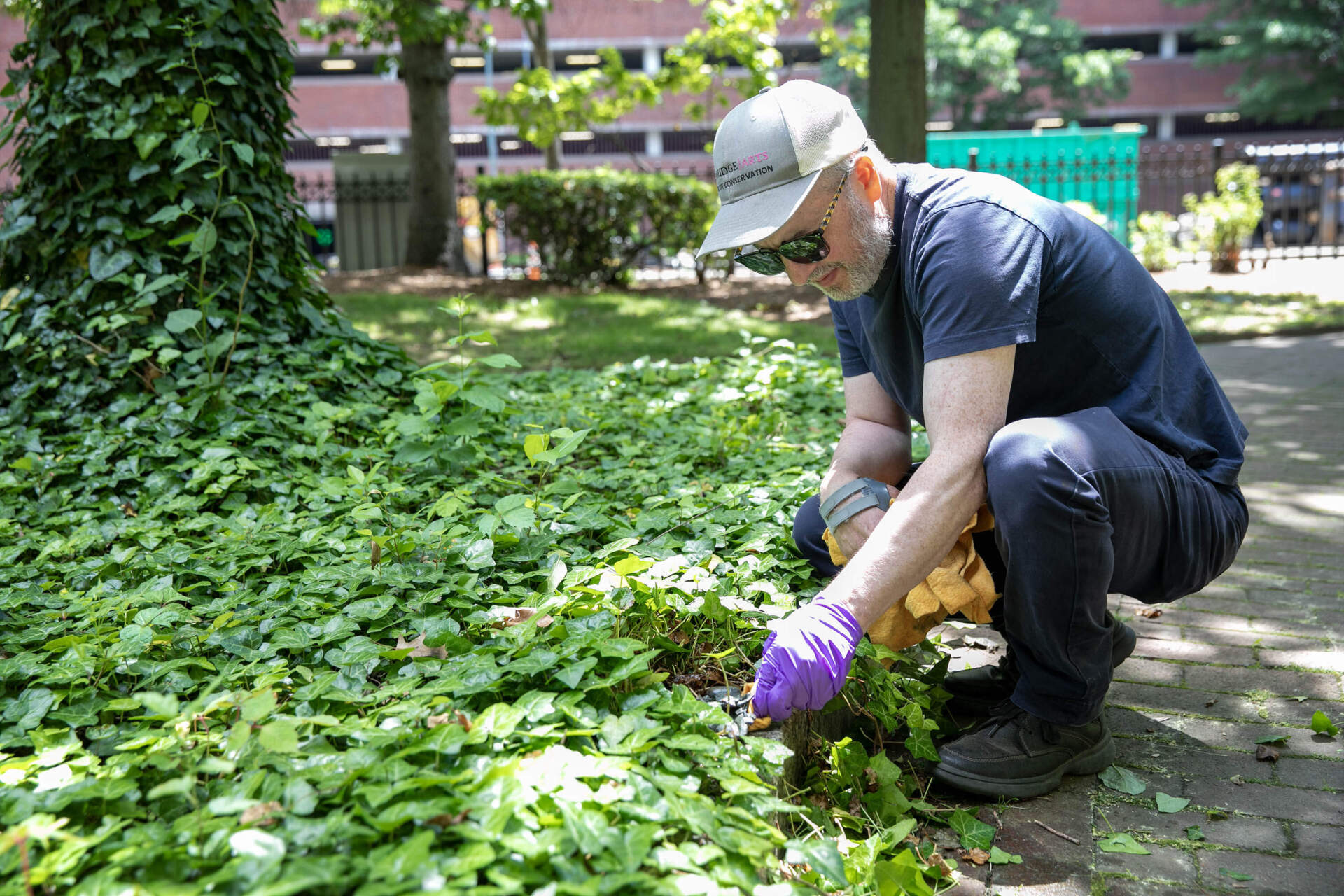
“Graffiti is always an issue,” Uram said. Also, “birds and other animals, damage from the weather, from pollutants, insects, gum, food.” They’ve even dealt with freaky accidents, like in 2021 when a utility truck ran into “Thunderhead,” a stainless steel bench created by Vivian Beer.
Other works have gone missing, including the 17 black, metal birds that were part of a work installed at the entrance to an underpass. “I’m sure there are residents in North Cambridge that have them in their apartments,” Uram said.
The job’s challenges are constant. And while they can be frustrating, Uram feels a sense of responsibility for the art under his purview. “I like preserving the past and present for the people that live here,” he said, “and these pieces become part of the fabric of the neighborhood.”
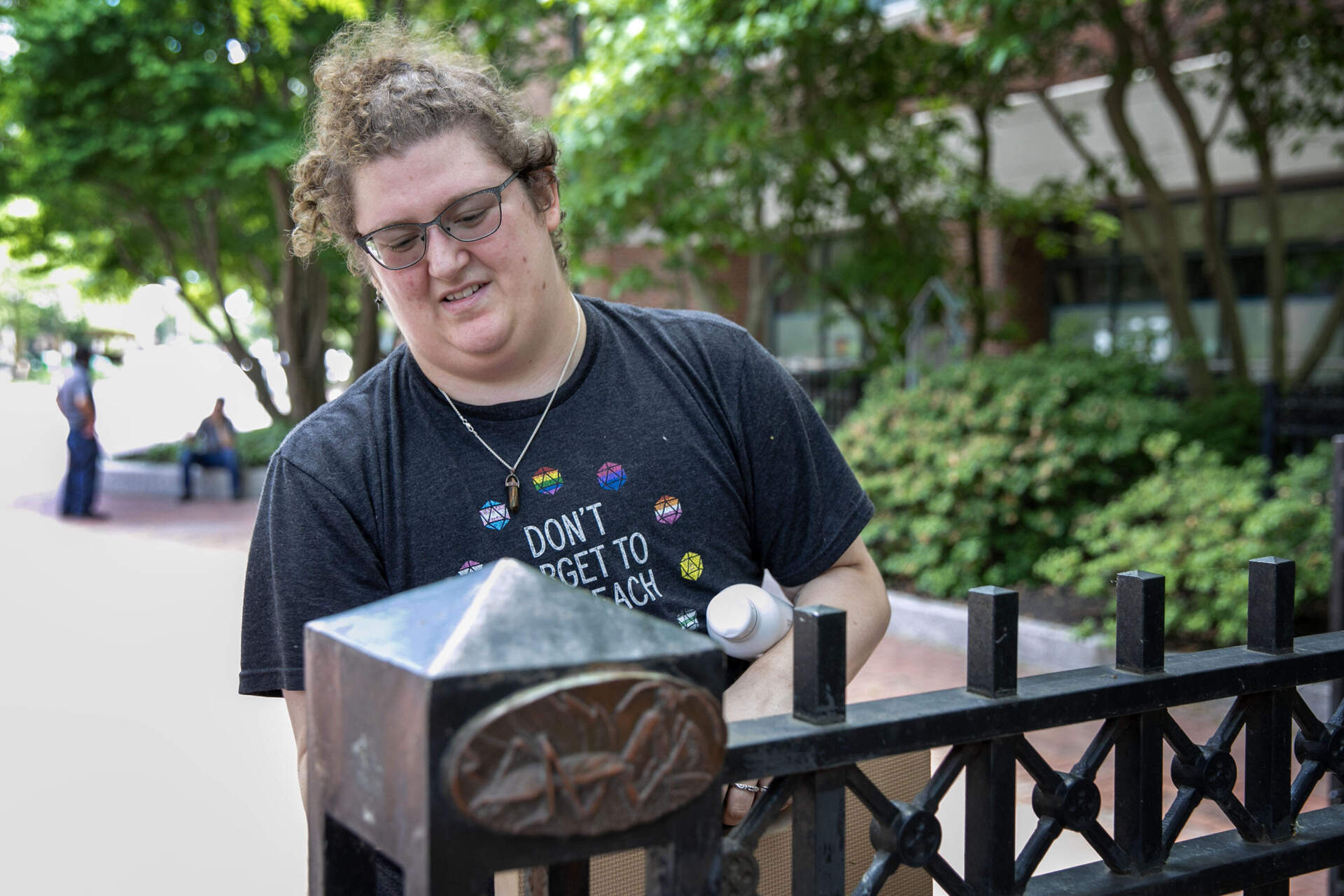
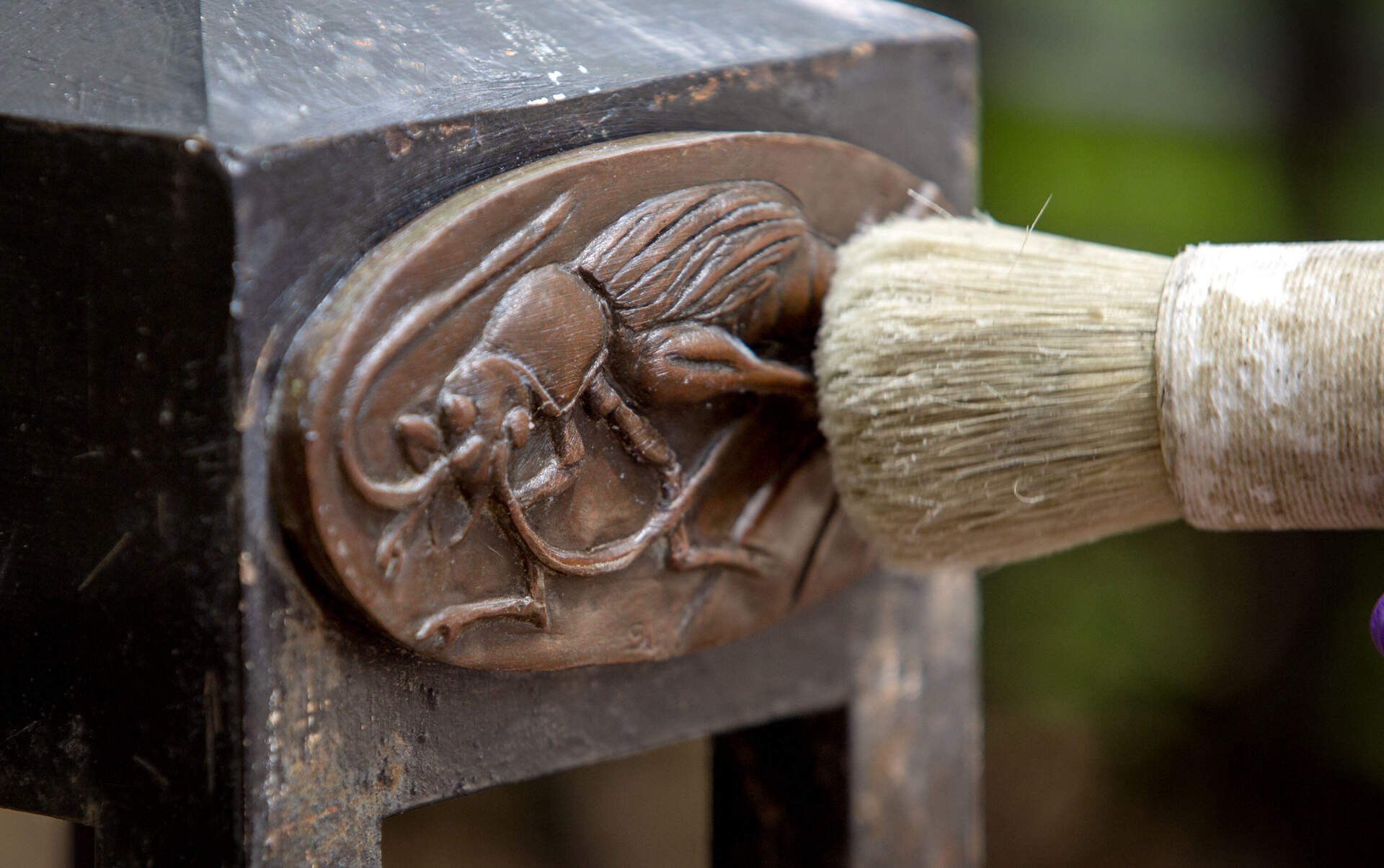
When Uram assembles his team, he likes to hire and mentor people pursuing careers in art conservation. For Alyx Zavetnya, doing this kind of work is a dream job.
“Not a lot of people think about the art as they're walking by,” the recent MassArt graduate said. “But it is cool to actually get in and see who did this piece, this is why it was made, this is who commissioned it. And being part of the process that keeps them alive is really satisfying.”
The tower’s faces looked more alive after their bath. It’s one of public art specialist Oussama Ouadani’s favorites because he said it captures the immigrant experience. “I'm a first-generation immigrant myself, and there’s a lot of emotions involved in that,” he said. “Some of the faces are stricken with anguish, some are happy, some are tired. I just love how they all come together in this very unique way.”
The 26-year-old grew up here and in Algiers, the capital of Algeria. As a kid, he didn't know Cambridge even had a public art collection. “So I think it's very meaningful for me to be a part of this team,” he said, “and to be sharing it with the city.”
Advertisement
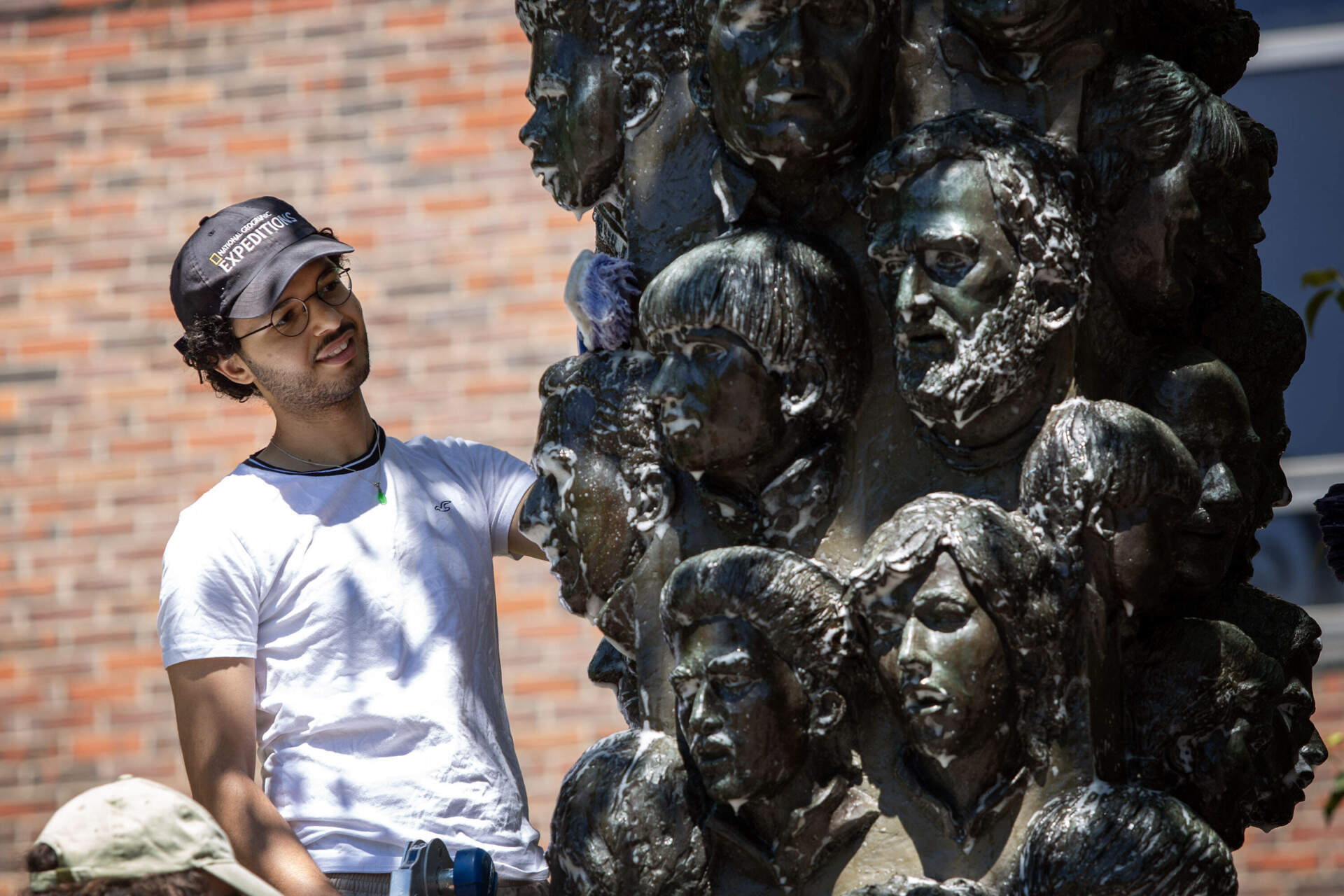
The team packed up their gear and headed to another small park down the street to spruce up some much smaller pieces. Artist Nancy Webb’s 40 bronze insects are scattered about and somewhat hidden, like little public art Easter eggs. Uram called them little jewels.
“My favorite one is over here because it's a bigger bug,” he said. But when he crouched down to inspect the creature, Uram discovered one of its legs had broken off. “I’ll have to sculpt that and have it re-soldered or welded on.”
Zavetnya used garden clippers to trim back some overgrown ivy that cloaked some other bugs. “It’s like 'Where’s Waldo?,' but for artwork,” she said with a laugh.
Pedestrians strolled by the conservation team as they worked. Sitting on a park bench, Arnold Senguba was pleasantly surprised to learn about Cambridge’s public art collection and the people who take care of it. “I didn't even know the city had a program like that,” he said. “I think it's a good thing.”

The city has been raising awareness about this behind-the-scenes work with an exhibition titled "Rust Happen(s): Caring for the Public Art Collection" at Cambridge Arts, the government agency that oversees the program. In the gallery outside the nonprofit’s office, executive director Jason Weeks said there’s a reason why there’s so much public art here. In 1979, the city enacted an ordinance that dedicates 1% of funds from every municipal capital and construction project to create site-specific works.
“And since the early 1990s, we began to realize — with the largest collection of contemporary art anywhere in New England — we had our work cut out for us to actually care for and maintain the work,” he said. And the public art conservation program was born.
The show pulls back the curtain through a display of tools, photos, videos and lots of stories. There’s also a cute tent in the middle of the gallery. It holds a gold replica of one of the city’s most cherished sculptures.
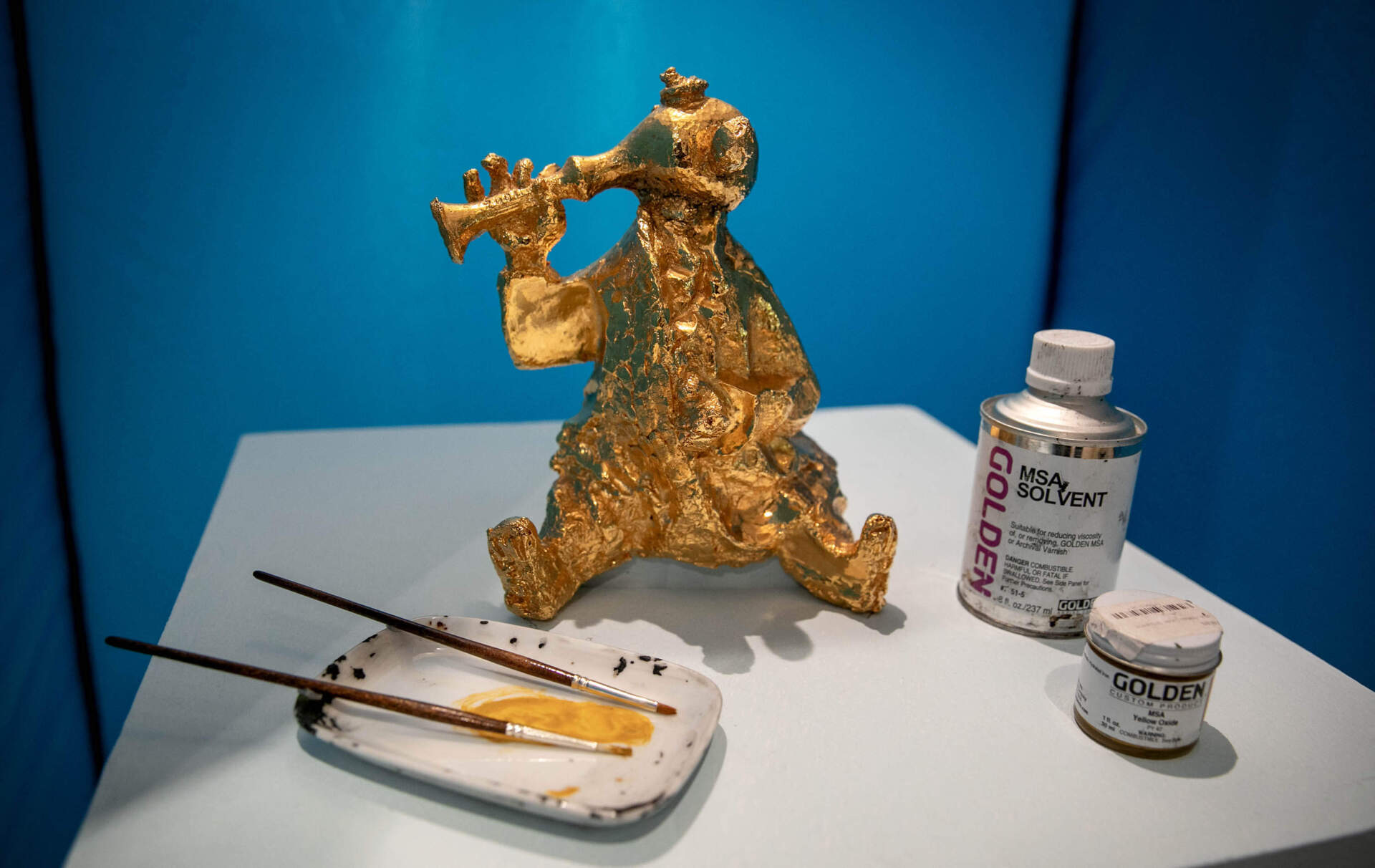
“It's called Fokin Memorial, but we lovingly refer to it as ‘Doo Doo,’ which is the name of his puppet,” Uram said. “It’s a tribute to Igor Fokin, who was a street performer in Harvard Square.”
People love to touch the piece, so Uram’s team has to restore its gold leaf every couple of years. “We set up the tent because gold leaf is very light and it blows with the wind,” Uram explained.
Uram hopes this exhibition helps residents understand what it takes to steward their collection. “You know, it doesn't belong to the Cambridge Arts Council,” he said, “it belongs to the whole city.”
He also urges well-meaning citizens to contact Cambridge Arts if they see damage or graffiti — rather than attempting to fix it themselves.
This segment aired on July 1, 2024.
